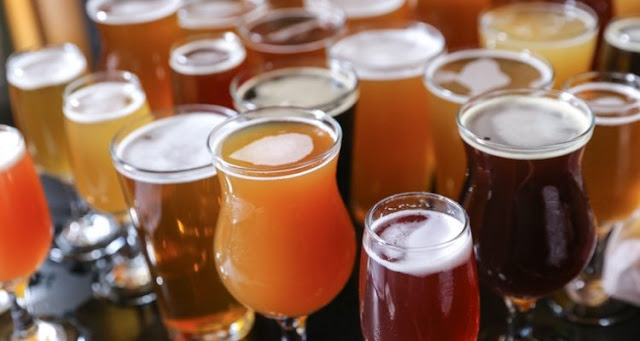Oktoberfest Season: The Rise of Craft Breweries
(Originally published on sommetdame.com on October 5, 2018)
Millennials as a generation have defined themselves by their love of specialties: local goods, fresh produce, organic everything, unique plates, signature coffees, and craft beer. Their desires have aligned with the economic push for sustainability and contributed significantly to small business prosperity. This new producer-consumer relationship has been unexpectedly symbiotic: word of mouth has evolved into the social media realm, and any product that can be tastefully laid out and properly filtered has a good chance of being shared on Instagram, Facebook, Twitter, Pinterest, etc. The reach of any singular company is now global thanks to this insatiable desire to share. The consumer of 2018 wants to have an experience that is, in a way, limited. No one cares to share a picture of a 6-inch meatball sub from Subway- anyone can have that experience. The intrinsic value of non-corporate, non-chain stores and restaurants is their singularity. Just as the millennial consumer wants to present themselves as an inimitable individual, they want their experiences to reflect that same quality.
Acai bowls, matcha iced lattes, artisan pizza, and craft beers are just a few of the trendy indulgences that have become Instagram fodder, but it is the latter that has featured an unexpected and unprecedented economic triumph.
According to a 2017 study by the US Bureau of Labor Statistics, breweries in the United States have multiplied seven times over from 2001 to 2016. 2017 data indicates that the industry has continued to prosper, with brewery employees tripling from just ten years ago. This success has allowed for a steady but noteworthy increase in beer prices: from 2006 to 2016 producer prices increased by 52 percent for barrels and kegs. The West Coast invariably leads the nation in number of craft breweries: California has 764, Colorado has 348, and by comparison, New York has 329. Yet the sprawl of establishments reaches every single state: Rhode Island has 17 breweries.
Unlike mass produced beers like Budweiser and Coors, the production of craft brews is characterized by its locality and exclusivity: the ingredients are local, the batches are small, the brewers are passionate, and all evidence points to these factors creating beers of superior quality that consumers are willing to pay extra for. The craft beer revolution, as it has become known, has also been marked by its inclusion of a variety of types of beers, from Kölschs, to IPAs, to Belgian whites. While major companies have largely ignored niche varieties in favor of the more universally desired light beers and lagers, craft breweries embrace opportunities to experiment with styles and flavor profiles. There is a beer for everyone- even gluten free beer has hit the market.
The craft beer revolution, as it has become known, has also been marked by its inclusion of a variety of types of beers, from Kölschs, to IPAs, to blonde ales. Tree House Brewing in Charlton, Massachusetts has garnered a cult-like following with customers willing to camp out in line for hours for a pint. Matt Richards of Tree House says of the demand for diversity in beers, “Variety is the spice of life. Every beer drinker can pinpoint a style of beer they like and will traditionally be willing to try that type of beer wherever they go.” A fan of IPAs, then is willing to pay a higher price to try a local IPA.
Fans of craft beers also appreciate the experience of visiting the breweries themselves to learn about the process and the story behind the product. Even a mass-produced beer like Guinness maintains a strong pride in its origins. The Guinness Storehouse is one of the most popular tourist destinations in Dublin, Ireland and is certainly a mecca for fans of the dark brew. The tour proudly boasts of their use of water from the River Liffey, and anyone who has been can agree that a Guinness in Dublin is superior to a Guinness anywhere else.
That is not to say that massive beer producers are facing imminent failure. Anheauser-Busch Inbev and MillerCoors still make up 90 percent of beer production in America. Plenty of consumers are extremely loyal to their favorite beers and are not particularly interested in trying craft brews and comparing hop content or maltiness. Consistency and reliability are the driving forces behind these mass-produced beers continuous success. There is something to be said for knowing what you are getting, and that is why beers like PBR and Miller High Life are not going anywhere.
As of 2017, craft beer makes up 12 percent of the overall beer market, and while this may seem minute, it is greater than it was in 2016, which can only mean the industry will continue to slowly but steadily thrive. Craft beer is quickly becoming a staple of American culture. This month many cities will hold Oktoberfests featuring specialty beers from local breweries. It’s a time to get together with friends and enjoy a pint or two, and it is this sense of community that is truly at the heart of craft beer.




Comments
Post a Comment